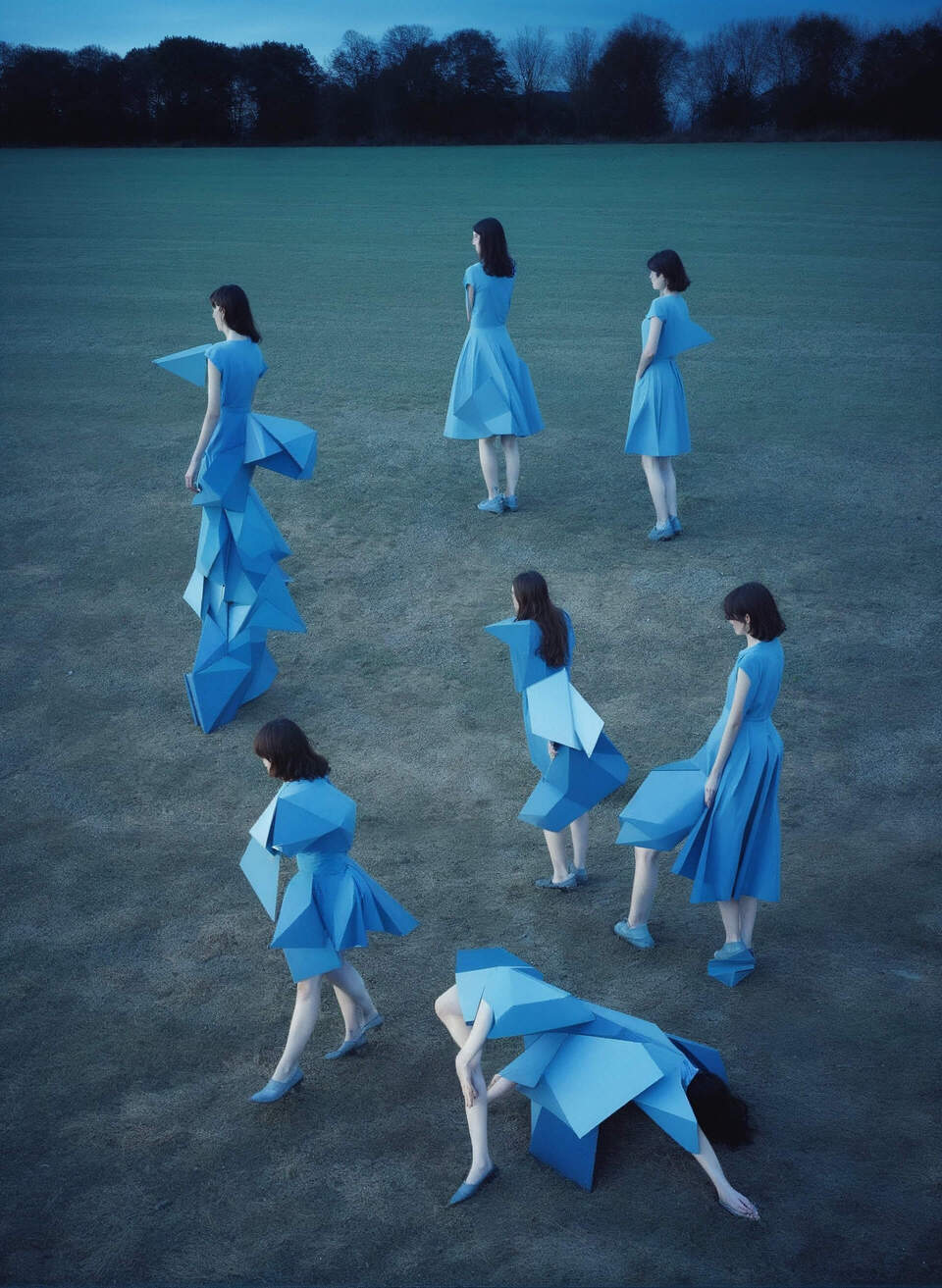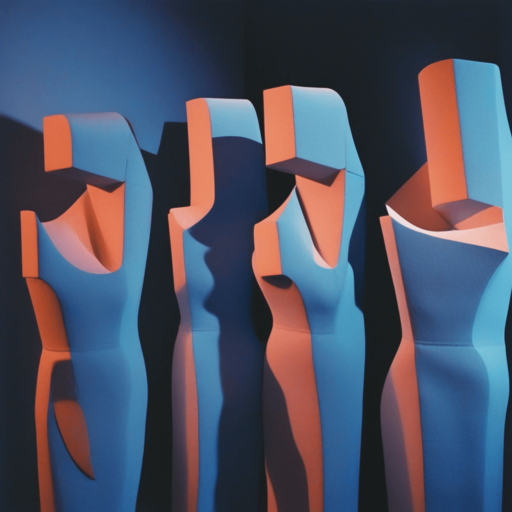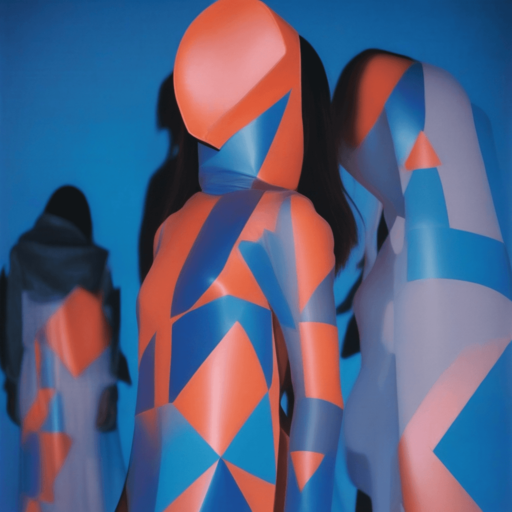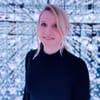Mixed-media artist and computer scientist Ivona Tau trains her A.I. models with analog photographs, turning generative adversarial networks into a sophisticated art tool.
While researching different A.I. platforms online, she encountered Civitai, where users have created repositories to share their tools for experimentation. On the platform, Ivona made a troubling discovery: She noticed that 90 % of the models included sexualized and fetishized images of women. This finding led her to create the series "UnBeautiful" to raise awareness of gender bias in A.I.. Here she shares more insights into the motivation behind the project, her creative process, and the greatest misconceptions about A.I..
The Overview: To better understand the type of content you encountered on Civitai, can you please describe it in more detail?
Ivona Tau: I came across portrayals of women with breasts four times the size of their heads and extremely thin waists or big bottoms. They didn’t look like women at all, more like caricatures of women. One A.I. model for example was called “Perfect round ass” and below in the comment section, there was a user review written in a weirdly clinical tech tone that read: “Smaller weight isn't going to mean smaller ass, it means more regression back to the checkpoint's default ass. With the checkpoint I'm using, they actually get bigger and less defined - with higher weights I'm getting smaller and more defined ones, which is what I was looking for. I want round defined butt cheeks not necessarily a big round ass, and this LoRA is awesome for that look.“
I was so disturbed by the sheer amount of these models. In addition to more extreme examples like these, there were also very stereotypical pictures of women mostly with Caucasian features such as light skin and blonde hair. Those models were primarily trained by developers from a very narrow demographic, mostly males from the US or Asia, showing a limited and objectifying view of women. Unfortunately, those people are involved with coding and computer science today shaping a technology that will profoundly impact our lives. So it’s even more important to have female researchers in A.I. to counteract these gender-biased portrayals of women.
It instantly triggered a response in me to address these stereotypical and sexualized images. So, I created a series that would completely deconstruct female beauty into something very abstract but at the same time still aesthetic. The project is meant to be a conversation starter, raising awareness of gender bias and female beauty standards in the age of A.I..


Social media also plays a big part in shaping these beauty ideals. There are examples of A.I. beauty filters on Snapchat and TikTok that transform girls' faces into unrecognizable versions of themselves, even using lip fillers. Studies also show the effects it can have on their mental health, leading to a distorted self-perception.
Ivona Tau: Basically, girls and women are encouraged to strive for an appearance that doesn’t exist in real life. When I was growing up, the internet was just emerging. Like every girl, I was also influenced by beauty standards shown in photoshopped magazine fashion spreads or TV advertising, however, today, in the age of A.I. and social media, it has reached a whole other level.
For UnBeautiful I also reflected on my coming of age. The series is dedicated to my younger self, the one who would have been intimidated by these unrealistic artificial beauty standards. That’s why for the project, I decided to use personal images from my twenties, a time when I was still trying to figure out what beauty meant to me. So I searched my old archives. Back then, I was fascinated by analog photography and used my grandfather’s Lomo LC-A from the 80s to take pictures. It accompanied me everywhere I went. It was a very free and joyful time, but there were also a lot of insecurities hidden behind those beautiful images and saturated colors.


What was the process of selecting the images and training the models like?
Ivona Tau: It took me a couple of weeks to go through the archives and select 100 to 200 images. Then I prepared the data to train the model. I used Python code and as I had already trained many models before I could work with an existing pipeline. So I just opened my large script which I run on a cloud server and changed a few parameters. You can determine how long the model will train and give instructions on what kind of data to use and how close to the data the model should train. You can also leave it more room for interpretation. I would run a few different settings and save iterations so I would not just have one single model but various ones, some more trained and some less trained. Sometimes it makes sense to work with more than one model. That’s what I did for UnBeautiful. I didn’t want the images to look too realistic so I was searching for those glitches in the data and geometrical forms.
The model that is trained more is closer to the original data and the less trained one is further away. There is no right answer in terms of which model is best. It all depends on the project. There are a lot of those settings. Some of them are quite clear-cut, others are more intuitive and you experiment with them to see the outcomes. In the end, you could say it’s more magic than science.


What first has inspired you to use A.I. in your artistic practice?
Ivona Tau: It started when I was experimenting with analog and alternative photography. However, moving forward it seemed unnatural to continue working with those tools. Analog photography is amazing but I was looking for something more contemporary.
While working on my computer science doctorate and experimenting with early generative adversarial networks (GANs), I discovered I could combine photography with A.I., blending the two fields.
My first attempts weren’t very well-designed. My initial experiment was even a mistake from a computer scientist’s perspective because I used the wrong parameters. But the beauty of using A.I. in art is that there are no true mistakes. Everything becomes the ‘right choice’ if you decide it is, especially if you, as an artist, find beauty, a concept, or a narrative in the result.
How much of the outcome is controllable, and how much is unpredictable? Would you say it is a kind of co-creation?
Ivona Tau: It's true that you can't control the outputs to pixel-perfect representations, but at the same time, there are many things you can control.
In some ways, it’s like working with a collaborator, although I don't like to humanize A.I.. I'd rather think of it as a very sophisticated tool; one that's so complex that we can't fully comprehend what happens when it processes such vast amounts of data.
Even when I'm working with my own data sets and I know every photograph inside-out, it still means having more like a very general overview. I don't remember every single pixel of every image. A neural network instead does that so much better. In some ways, I'm not able to control it because my brain is a bit more limited.
I'm not saying that artificial intelligence surpasses human intelligence because that's far from true but those large models can do calculations that the human brain can’t. There is some beauty in it as a tool for creative expression. It means that you can broaden your horizons because through the A.I. you can suddenly see patterns that you otherwise wouldn’t be able to detect just by looking at the data yourself.


What do you think are the greatest misconceptions about generative A.I.?
Ivona Tau: I think the majority of people associate generative A.I. only with ChatGPT or Midjourney. So either text-to-image tools or conversational models but there is so much more to it. First of all, generative A.I. can generate all sorts of things not only texts or images, it also creates 3D models, sounds, and much, much more.
Another misconception is that using generative A.I. is limited to large models pre-trained by big tech companies. The problem with these large models is that they are trained on data scraped from every corner of the internet, including copyrighted materials and low-quality content containing biases.
What many people aren’t aware of is that it’s also possible to train smaller and similar models with comparable capabilities to GPT-4 ethically by using open-source data. So in the end it’s a choice that researchers and the tech industry have to make.


What level of technical expertise does the average user need to successfully train their own models?
Ivona Tau: There are already some interfaces on Replicate that allow you to train Flux, the newest image model without needing to code. So this would be a more accessible option. .
However, it's not as user-friendly as ChatGPT so there is still a barrier to entry. But I think it's important to make the public aware of these A.I alternatives. There is still some work to do, but we're heading in the right direction. And hopefully, in 5 to 10 years, we will all be training our own smaller models with full ownership of the data.
This interview has been edited for length and clarity.





